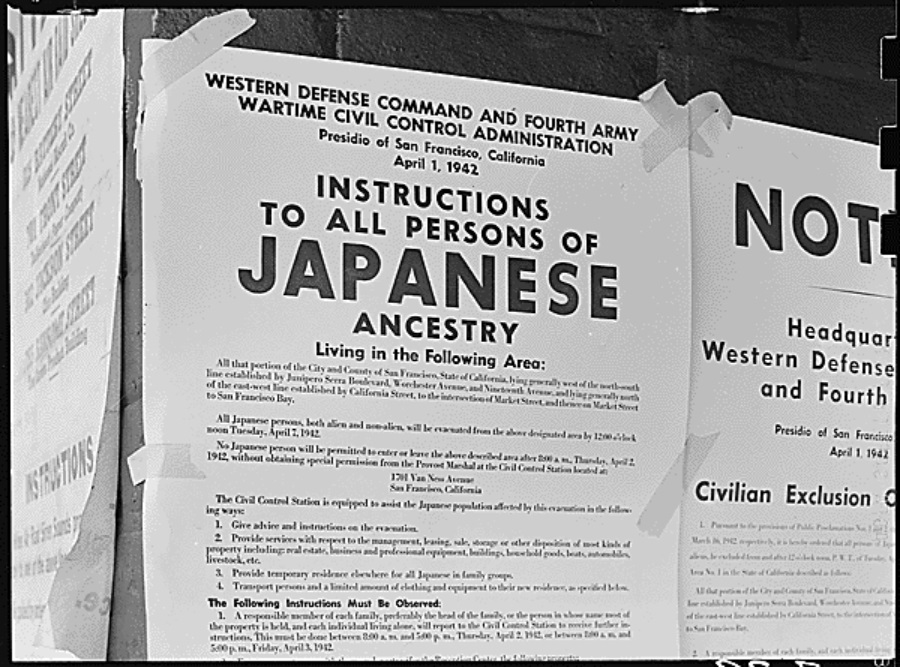
Background
With the Japanese-initiated attack on Pearl Harbor, the United States was plunged into the midst of World War II. Nearly two months after the attack, President Franklin D. Roosevelt issued Executive Order 9066.
In an effort to curb potential Japanese espionage, Executive Order 9066 approved the relocation of Japanese-Americans into internment camps. At first, the relocations were completed on a voluntary basis. Volunteers to relocate were minimal, so the executive order paved the way for forced relocation of Japanese-Americans living on the west coast. During the six months following the issue of EO 9066, over 100,000 Japanese-Americans found themselves placed into concentration camps within the United States. These concentration camps were called “relocation camps.”
Japanese-Americans were referred to by their generation within the United States. The first generation of Japanese immigrants were called Issei. The second generation of American born Japanese-Americans were called Nisei. This executive order affected over 117,000 Japanese-Americans from both generations. Thousands of people lost their homes and businesses due to “failure to pay taxes.”
EO 9066 was widely controversial. This order stayed in place until President Harry S. Truman signed Executive Order 9742 on June 25, 1946. EO 9742 ordered the liquidation of the War Relocation Authority and allowed Japanese-Americans to return to their homes. Many of the newly released Japanese-Americans returned home to find their belongings stolen or their property sold.
Japanese-Americans who were returning home faced discrimination and prejudice from the civilian population. President Harry S. Truman, who was ashamed of these acts, paid tribute to the Japanese-American soldiers of the 442nd Regimental Combat Team.
In 1988, President Ronald Reagan signed the Civil Liberties Act. The remaining survivors of the relocation camps were sent formal letters of apology and were awarded $20,000 in restitutions from the United States government.
Despite the actions taken by various presidents after the liquidation of the War Relocation Authority, many Japanese-Americans never felt closure. The American-created internment camps are rarely discussed in history. Royals bench coach Don Wakamatsu said, “Any time you can talk about it, it immortalizes it a little bit more,” he said. “There’s always in history a learning curve. Or so we can hope… if we seek to stay true to the promise of the Declaration of Independence and our Nation’s creed of liberty.”
Key Question
Can a major wrong ever be righted?
Directions
Materials
Documents to be examined:
Document Set 1
- Report, Japanese-Americans in Relocation Centers, March 1943
- Memorandum, Milton S. Eisenhower to Members of Congress, April 20, 1942
- Newspaper Article, “Japanese planes destroy US fleet at Pearl Harbor,” December 8, 1945
Document Set 2
- Report, Japanese-Americans in Relocation Centers, March 1943
- Various photos and comics, 1942
- Letter from Mrs. Shipman to President Harry S. Truman, February 11, 1943
- Japanese Internment Camp cartoon, September 11, 2001
- Video, Japanese American Responses to Incarceration
Document Set 3
- Photograph, The first evacuation claims check presented to Tokuji Tokimasa, February 1950
- Harry S. Truman’s Remarks Upon Presenting to a Nisei Regiment, July 15, 1946
- Executive Order 9742, June 25, 1946